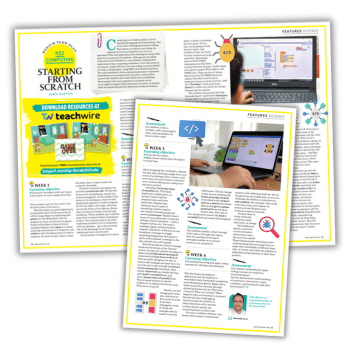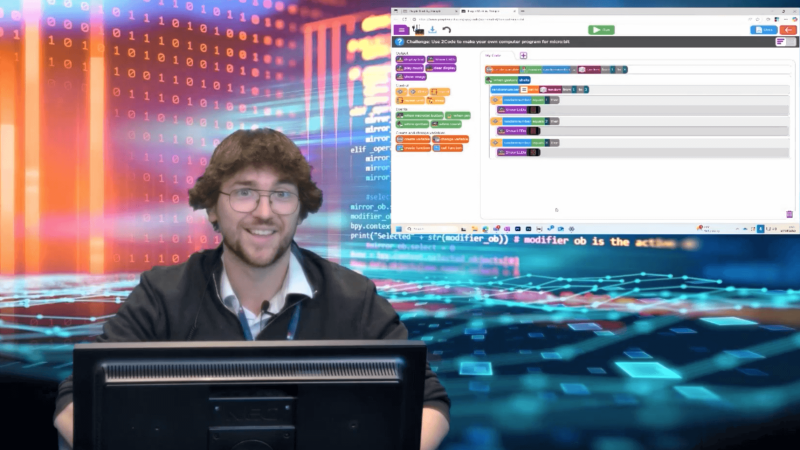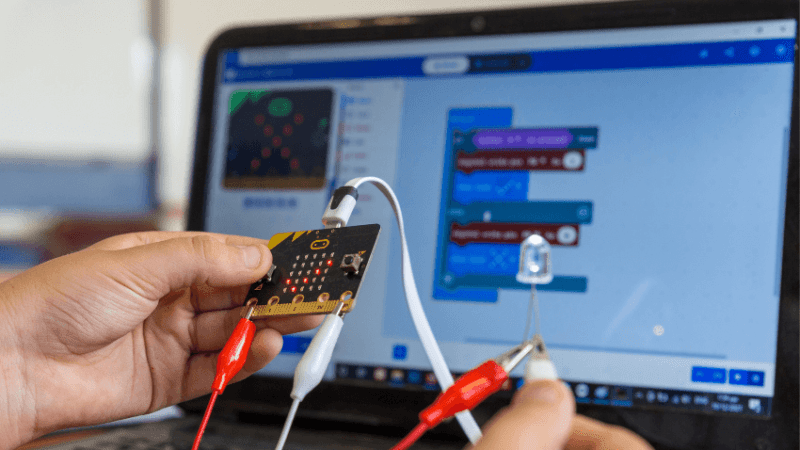KS1 computing curriculum – 5 activities to teach computational thinking, programming and more

Check out these five practical ways to cover the computing curriculum in Key Stage 1 from Lisa Moss and Dr Thomas Bernard…

Developing STEM skills, including critical and computational thinking, is key from a young age. 2018 research by Richard Sheldrake showed that exposure to and building confidence in these disciplines can often be a predictor to following a career in STEM fields. Imaginative and active hands-on play, combined with problem-solving through play, is essential for providing an engaging experience.
Young children’s natural curiosity is a magical state of mind that supercharges learning. By introducing problem-solving skills, and learning to fail from a young age, children are better equipped to face a fast-paced changing world.
The key is to connect children’s imagination and curiosity to the world they live in with simple challenges where problem-solving, critical thinking, collaboration and creativity are the keys to finding solutions.
Here are some simple and practical STEM ideas that develop transferable critical and computational thinking skills, and will engage your KS1 pupils. They cover some of the essential KS1 objectives for the computing national curriculum.
1 | Cooking with algorithms
Nothing motivates children more than getting to make their favourite snack, especially when they know they will get to enjoy it at the end. In school this could be making a smoothie or popcorn, linked to a restaurant or movie theme.
Algorithms are sequences of steps which need to be followed in a specific order to reach an end result and following a recipe is the perfect activity.
Throw in some challenges such as the following: if the smoothies are for group A, use kiwis and carrot juice; if they are for group B, use bananas. If we’ve run out of butter for the popcorn, what should we use instead?
‘If-then-else’ statements are conditional sequences of steps which are done only if the ‘if’ condition criteria are met. Furthermore, ‘debugging’ is a great way for children to determine why their smoothies are suddenly not tasting as planned.
They have to use their problem-solving skills to figure out that they have missed adding the bananas.
2 | Abstraction treasure maps
Plan a pirate treasure hunt quest. The adventure starts with dressing up and making a treasure map (a simplified version of the school environment).
Children need to hide their ‘treasure’, mark it on the map and then give this to the other team. This activity helps children to grasp the idea of focusing on the most important information to reach the end goal, with a strong emphasis on teamwork.
3 | Programme your robot
One child takes on the role of a ‘human robot’. Another pupil gives the robot a set of verbal ‘commands’ to complete a task. For example, to drink a glass of water the first step is to open your right hand, then grab the glass in front of you, etc.
Vary the challenge depending on the age group of pupils, from simply walking to the door to making a sandwich and eating it. Children will learn the importance of commands (steps) and sequencing, as well as how to debug and try again (reprogramme) when it doesn’t go as planned.
4 | Patterns of nature
Ask children to go on a nature expedition, collecting different items from the park or wood (leaves, flowers, pinecones, etc). Pupils must then work together in teams to sort through their ‘treasures’ based on similarities and differences and then place them in different buckets.
Next, create patterns using the collected items and ask children to predict which items come next. This helps children to identify patterns and predict in a logical way what comes next.
5 | Problem decomposition
Ask children to select an object or a construction they see around them, such as a house. Ask them to draw what they’ve selected, then ask them to draw the separate pieces of what they’ve selected.
Set up a competition to draw the object in the most number of pieces. Pupils will have to decompose the object into smaller pieces while keeping in mind the bigger picture.
Lisa Moss and Dr Thomas Bernard are co-founders of QuestFriendz (@questfriendz) which aims to inspire STEM learning through interactive storytelling. Visit the website at questfriendz.com to preorder a copy of educational picturebook The Adventures of Lillicorn in WooWoo Land and download STEM activity sheets and lesson plans.








